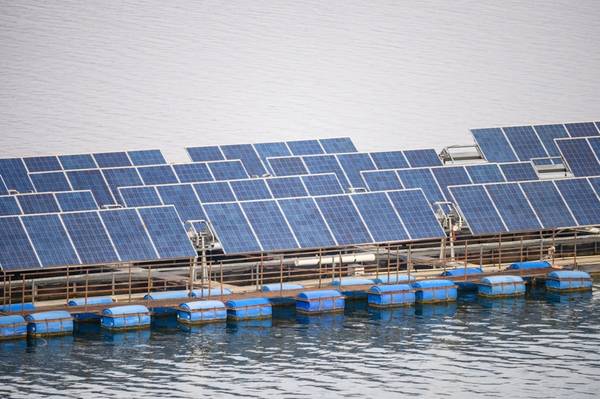
Sarawak Energy aims to install at least 400 megawatts (MW) of floating solar power capacity at its dams by 2030 as the Malaysian utility expands to meet rising demand for renewables from neighboring countries, its group chief executive said.
The company owned by the Malaysian state of Sarawak, which produces most of its power from hydroelectric dams, is expanding into solar capacity as it seeks to reduce reliance on coal and ramp up exports to neighboring Sabah state, and countries such as Indonesia, Brunei and Singapore.
Sarawak Energy started construction at its first 50 MW floating solar unit at its Batang Ai dam this month which is expected to be completed by end-2024, CEO Sharbini Suhaili told Reuters on Tuesday on the sidelines of an Energy Asia conference.
He said studies found that the company could reliably connect up to 1,500 MW across its three hydropower plants to its grid. Sarawak Energy is also building a fourth hydropower plant to be commissioned by 2028, which will bring its total hydropower capacity to 4,737 MW.
The company has signed agreements to export 30 MW to 50 MW of electricity to Sabah state in 2024.
Sarawak Energy exports about 80-100 MW of electricity to Indonesia's West Kalimantan and is building a 1,375 MW hydropower plant with its partner in North Kalimantan which may come online by 2030, Sharbini said.
Sarawak Energy is also in discussions with Brunei as well as Singapore, where it has completed a feasibility study to export hydropower via undersea cables around 2030, but the high cost and technical difficulties remain a challenge.
"About 70-80% of the cable will be in Indonesian waters, so that we need to manage as well," he said.
Such a connection would help kickstart an ASEAN power grid, Sharbini said, an idea that has been long-discussed but has remained on the drawing board.
Sarawak Energy plans to reduce the share of coal in its power mix to 10% by 2030 from the current 18%, Sharbini said, in part by decommissioning its 210 MW Sejingkat power plant by 2028 and the 270 MW Mukah power plant after 2030, he said.
Its 624 MW Balingian coal power plant, built in 2020, will be retained to ensure energy security, he said.
(Reuters - Reporting by Mei Mei Chu; Editing by Florence Tan and Robert Birsel)